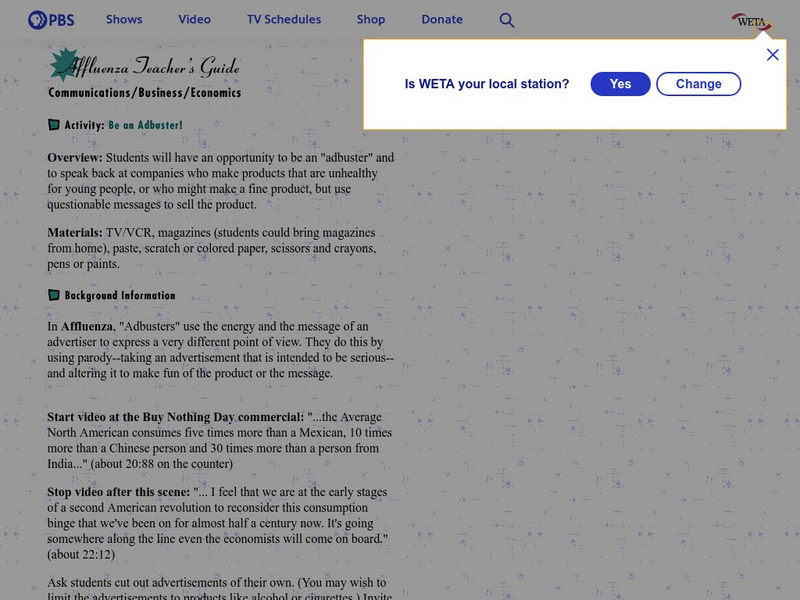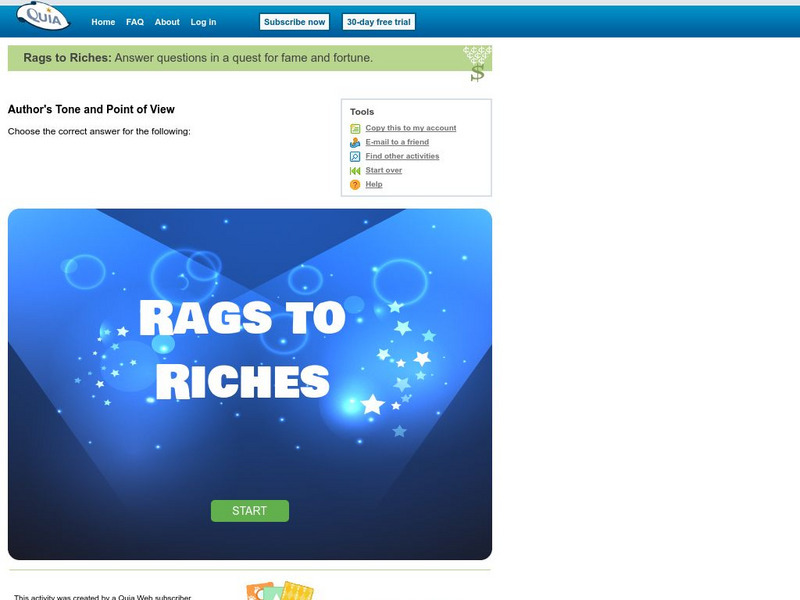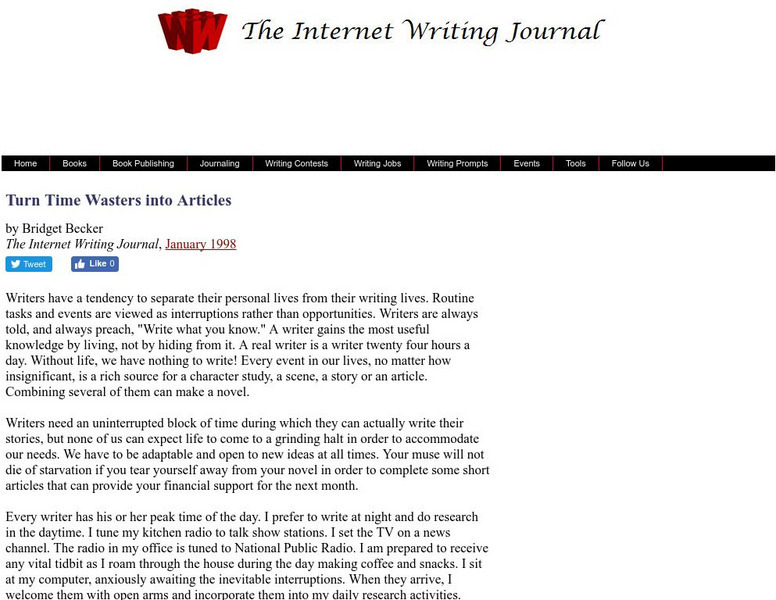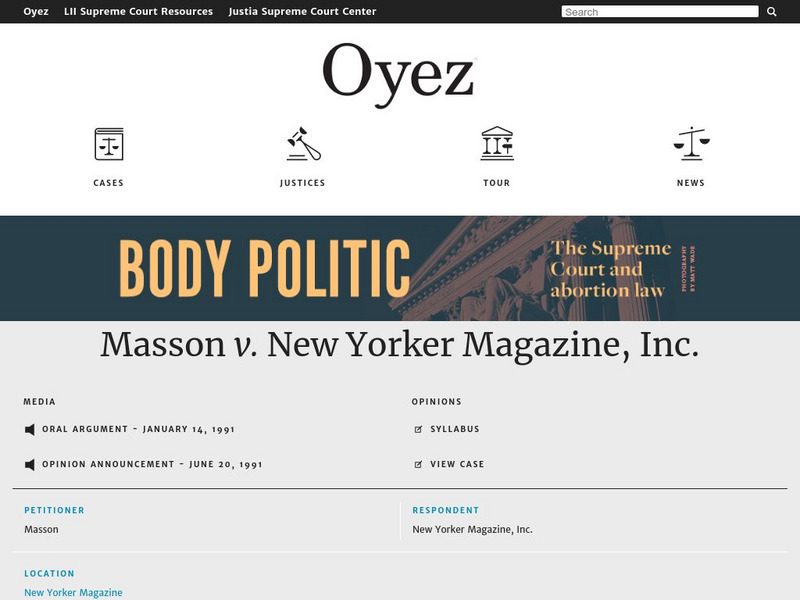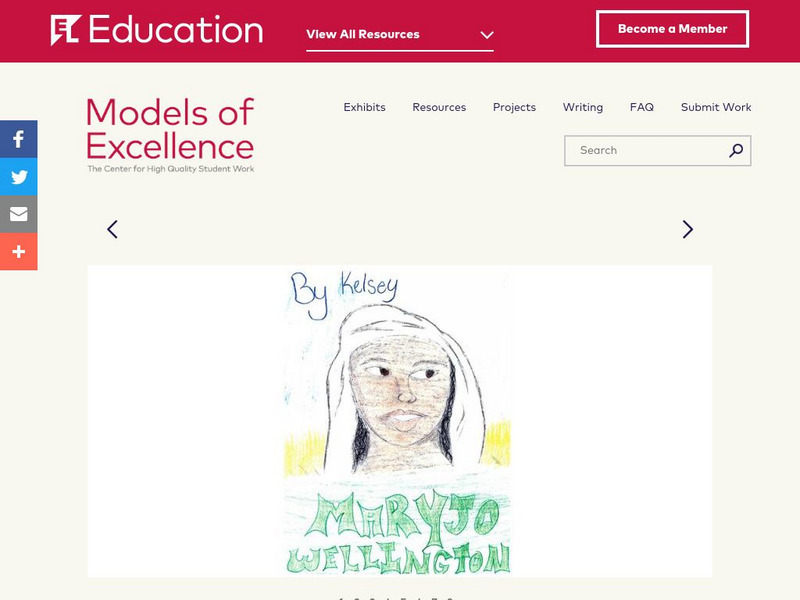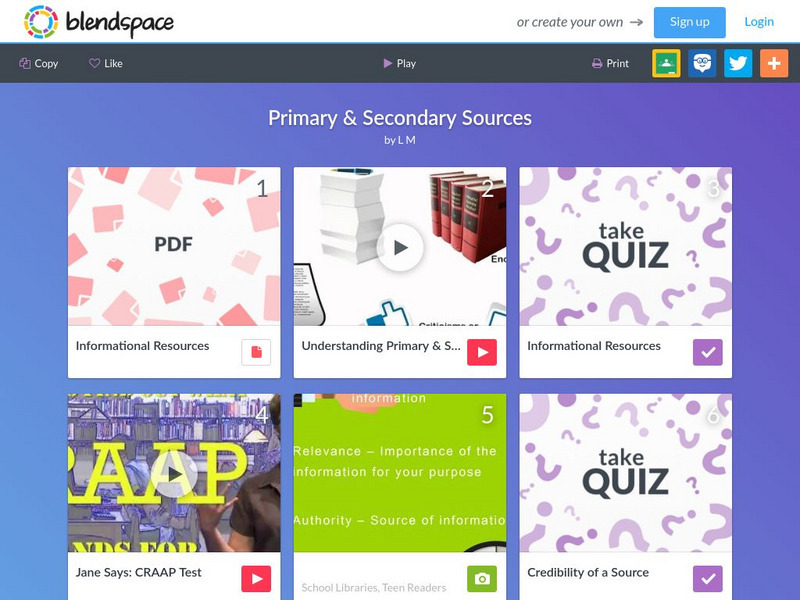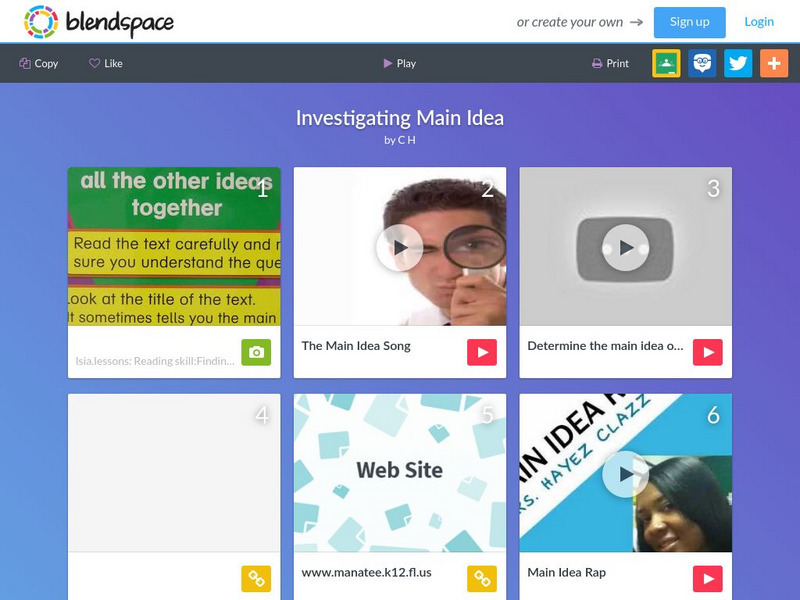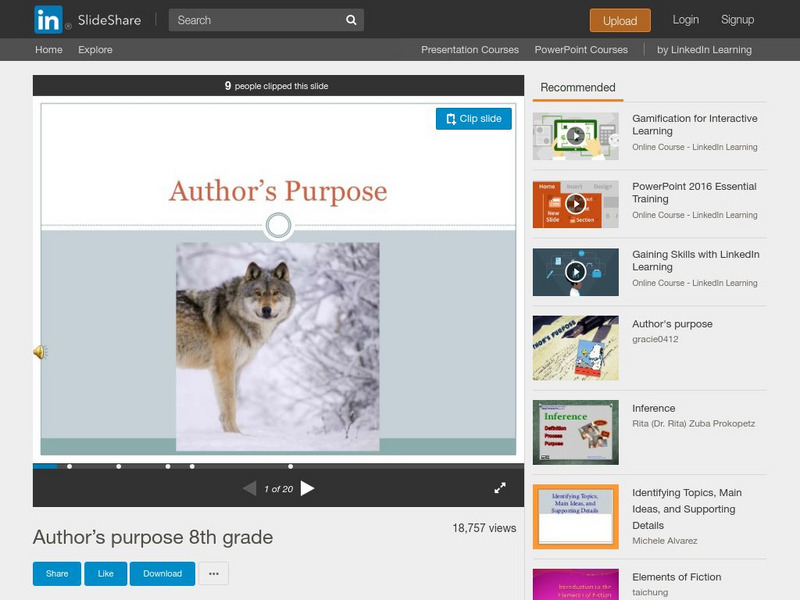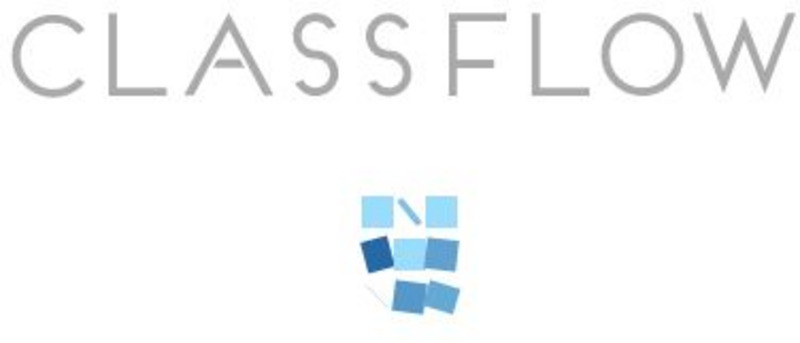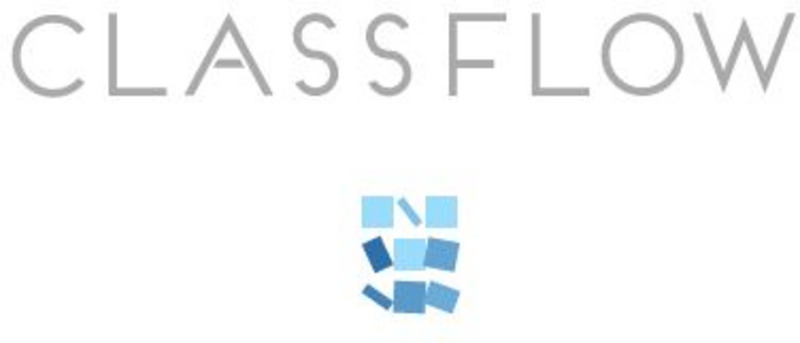PBS
Pbs Lesson Plan (Affluenza): Be an Adbuster
Through an integrated approach from PBS, students examine the messages conveyed in print advertisements. Using parody, students are asked to alter the message of an ad to present a different or opposite point of view. Lesson may be more...
Quia
Quia: Five Themes of Geography Phrases and Keywords
Quiz takes phrases and key words and you pick the theme of geography the phrases describes.
Scholastic
Scholastic: Guidelines for Determining an Author's Main Idea
Follow the steps in this printable PDF to identify the main topic and key details of an informational text.
Quia
Quia: Author's Purpose Popups
Read each text description and determine if its purpose would be to entertain, inform, or persuade in this five question quiz.
Quia
Quia: Rags to Riches Author's Tone and Point of View
Answer questions about author's purpose, tone, and point of view in this Rags to Riches style game.
Other
History Buff: History of Newspapers in 1930's Chicago
First-person recount of how journalism and the papers were affected by outside forces in the 1930s. One focus is on circulation, delivery, and problems faced because of crime.
University of California
Cal Heritage Collection: Using Primary Sources
This resource covers what primary sources are, where we can find them, and how we can assess them in the classroom.
Other
Turning Time Wasters Into Articles
This "how-to" is devoted to turning casual ideas and observations into publishable articles and columns. Gives practical advice for all ages.
Illinois Institute of Technology
Oyez Project: Masson v. New Yorker Magazine, Inc. (1991)
This summary examines the impact of the 1991 US Supreme Court decision regarding the attribution of quotes to sources used in journalistic articles. Includes links to the full case, audio files, and how the justices voted on the case.
EL Education
El Education: Mary Jo Wellington
After researching primary and secondary resources on slavery, students create a fictional character file that is both historically and geographically accurate and demonstrates an understanding of the humanness of slaves.
Wisc-Online
Wisc Online: Identifying the Main Idea
This resource defines main ideas and is an interactive way to assess a student's ability to correctly find main ideas from paragraphs.
Stephen Byrne
History for Kids: Geoffrey Chaucer
History of the famous 14th Century English poet and bureucrat, Geoffrey Chaucer, who wrote the well known, Canterbury Tales. Includes teacher resources.
Stephen Byrne
History for Kids: Ancient Greek Literature
History for Kids presents an overview of literature, libraries and the art of writing in ancient Greece. Students can glimpse a sample of the Greek Alphabet and learn about the epics that are still read today. Includes teacher resources.
Stephen Byrne
History for Kids: Medieval Literature
History for Kids presents information on literature of the Middle Ages including the mechanics of language and the alphabet as well as the stories that were popular. Includes links to activities, worksheets and quizzes.
Stephen Byrne
History for Kids: Ancient Chinese Literature
Article references the literature of anceint China and provides a brief overview of
TES Global
Blendspace: Primary & Secondary Sources
A twelve-part learning module with links to texts, videos, quizzes, images, and websites to use while learning about primary and secondary research sources.
TES Global
Blendspace: Who? What? When? Where? Why? How?
An eleven-part learning module with links to websites, an image, and a video about using questioning skills to research and write about one's family history.
TES Global
Blendspace: Investigating Main Idea
An eleven-part learning module with links to images, videos, websites, slides, and a quiz about finding the main idea.
TES Global
Blendspace: Primary Sources
A learning module with twenty-three links to videos, texts, images, websites, texts, and a quiz about primary sources.
E Reading Worksheets
E Reading Worksheets: Author's Purpose Test
An multiple-choice quiz on identifying an author's purpose.
Tom Richey
Slide Share: Author's Purpose 8th Grade
A slideshow with twenty slides with information and examples of four different purposes an author can have for writing a text: to entertain, to persuade, to express, or to inform/explain.
Other
Prezi: Author's Purpose
Slideshow provides an explanation of the author's purpose which is to reflect, inform, persuade, or entertain (RIPE).
ClassFlow
Class Flow: Note Taking for Social Studies
[Free Registration/Login Required] This flipchart covers how to read a historical text and convert information into visual representations by taking notes. This strategy helps students to read a passage and determine the author's purpose.
ClassFlow
Class Flow: Reading to Gather Information
[Free Registration/Login Required] This is an introduction for elementary students learning to pull facts from sources.


